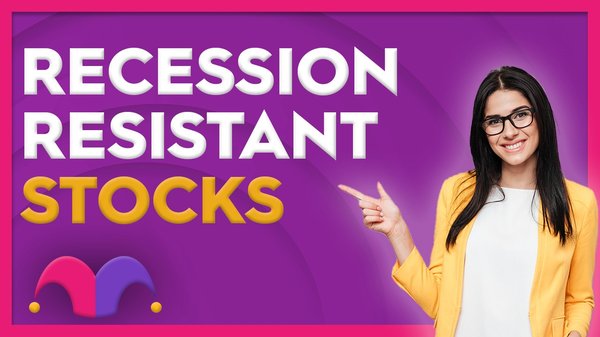Research and development activities, otherwise known as R&D, are centered on discovering and creating new products or services for a company. Most companies have R&D expenses, but technology and pharmaceutical companies tend to spend especially large amounts to stay ahead of the competition. A major advantage of R&D expenses is their ability to be used to reduce taxes.
If you want to invest in high-growth companies, you'll need to understand how R&D works, the common types of R&D, and its importance to investors.

What is R&D?
What is R&D?
Research and development expenses are incurred by governments and corporations. Corporations typically invest the funds in a more focused way with a targeted return on investment (ROI); governments create grants and other ways for third parties to receive taxpayer funds for R&D. We'll focus more on the corporate side of things.
R&D is necessarily a long-term, focused expense. The types of products and services created in R&D departments often take years to develop. Corporations have to balance the long time frame in research and development with the prospects of generating a positive ROI from the expenditure.
Measuring return on investment is common for capital expenditures, such as buying new equipment or building a new office, but it is less common for operating expenses. With capital expenditures, the calculation is easy: You figure out how much cash flow you'll generate from the new investment and make sure the cash outflow is offset by the new profits. With R&D, it's not as clear since it's almost certain that some or most of the funds you invest will be worthless. To paraphrase Thomas Edison, you don't fail, you just find thousands of things that don't work.
Alphabet's (GOOGL -1.82%) 20% rule is good example of using R&D to maximize profits. All Google employees are allowed to work on personal projects one day a week. Products as diverse as Google News, Wear OS, and Gmail came from Alphabet's 20% rule. The R&D expense was obviously profitable for the company, but there was no way for Alphabet to determine the potential returns.
A good rule of thumb for corporations is the use of return on research capital, which is calculated by dividing the previous year's R&D by the current year's gross profit. The formula isn't perfect, but it's a widely accepted method of calculating ROI for R&D.
Types of R&D
Types of R&D
Research and development trickles down into everyday products through several different models. Let's go over the most popular.
Corporate departments
Large corporations have departments staffed with engineers and industrial scientists who do research on various levels of the R&D process to develop new products and improve existing ones. The most common example is pharmaceutical companies developing and testing new drugs.
Start-ups and incubators
While large corporations may dedicate a department to R&D, some start-ups dedicate the whole company to R&D, such as companies with no revenue that spend all their money and time on developing self-driving cars, new cancer drugs, or even a better razor.
R&D-focused start-ups often work with incubators or accelerators. Both incubators and accelerators are run by venture capital firms, and they work with start-ups at different stages of the business. Typically, incubators work with start-ups that are mostly still an idea. They help the company develop the idea, plan a business model, and create a product. Accelerators work with start-ups that have an established product and help them bring the product to market and scale the business.
The end game for both types is often a merger with a bigger company.
Mergers and acquisitions
The problem with research and development at a big corporation is that it's R&D at a big corporation. It's hard to be innovative when you work a 9-to-5 job, report to a middle manager, and get an annual 2% cost-of-living raise. So, when big corporate R&D departments aren't cutting it, the big corporation will often look to acquire a small, innovative company.
This process is more common than you'd think. The Android OS was originally developed by a start-up that Google acquired to get into mobile. Microsoft (MSFT -1.96%) acquired Hotmail and 86-DOS. eBay (EBAY -0.82%) acquired Paypal (PYPL -1.67%) (and then spun it off). Google acquired YouTube. Disney (DIS -0.93%) acquired Pixar, ABC, ESPN, and Lucasfilm.
In addition to being a last resort for bigger companies that haven't been able to develop their own products, mergers and acquisitions offer a much clearer ROI proposition. The corporation knows the exact amount it must spend to acquire the company and then can determine the cash flows from the acquisition once it's complete.
Cash Flow
Why is R&D important?
Why is R&D important?
R&D is a vital expense for companies to continue growing and fending off competitors. Here are a few key reasons for a company to keep healthy R&D expenses going:
Competitive advantage
Developing strong competitive advantages is key to long-term profitability. This means constantly developing newer and better products that cost less to produce. Some of the biggest R&D spenders in the U.S. are companies such as Amazon (AMZN -1.35%), Apple (AAPL -2.19%), and Alphabet, which spend billions on R&D each year.
Let's look at Amazon and now-defunct Borders, both once flourishing general interest bookstores and almost direct competitors. Consider what the two bookstores look like now for someone who invested in them 25 years ago.
Amazon, which began life as an online bookstore, now houses a multibillion-dollar cloud services business; has profitable funnels to its Prime program using tablets, e-readers, original TV series and movies, digital media players and eBook subscription services; and voice-activated products like Alexa that wouldn't have existed if it hadn't made investments in R&D over the past two decades.
Borders, meanwhile, has been out of business for a decade.
A big reason that Amazon still exists and Borders doesn't is because Amazon was able to leverage its R&D program.
Productivity advantages
R&D isn't only focused on developing new products. There is also substantial investment that goes into figuring out better ways to produce existing products. The faster and cheaper you can churn out widgets, the more money you'll make from each one -- and the less you can eventually charge for them, earning a competitive advantage.
New revenue sources
Every product has a life cycle. While some stay in the growth phase longer than others, there will eventually be an end to outsized profits. This is especially true for the pharmaceutical industry. Companies spend billions developing and improving drugs, and then they have a finite life cycle until the recipe is made available to everyone else to reproduce. If pharma companies weren't constantly investing in R&D, they would eventually run out of revenue sources.
Tax advantages
In addition to writing off R&D expenses on the income statement, many jurisdictions offer tax benefits for engaging in specific types of R&D.
Related investing topics
A key to investment returns
A key to investment returns
R&D can be the lifeblood of a technology business. There is no better way to stay ahead of peers and create new opportunities for growth than research and development. If you're learning about investing in high-growth companies, keep an eye on the R&D line item. Make sure the company is investing enough and generating a satisfactory return on its investment.











